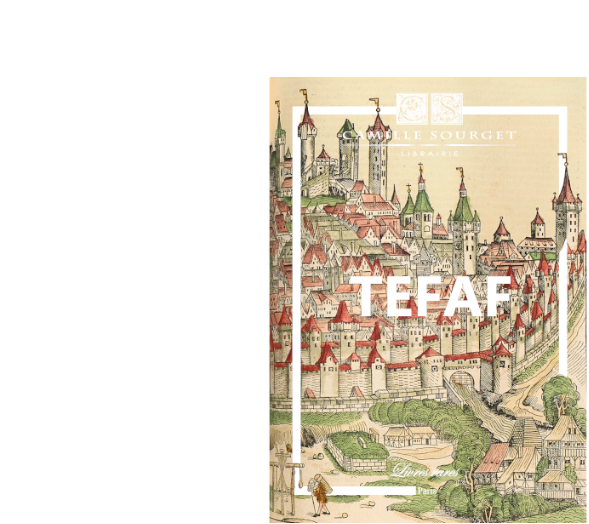The most famous of the treatises on perfumes
preserved in its period marbled calf binding.
Ex-libris of the library of the viscount Émile de Guizelin.
[Barbe, Simon]. The Royal Perfumer, or Treatise on Perfumes, Of the most beautiful Secrets royal, ou Traité des Parfums, Des plus beaux Secrets that go into their Composition, & the Distillation of Fragrant Waters & other precious Liquors. New edition, revised, corrected, & considerably enlarged.
In Paris, at the palace, at Saugrain’s, 1761.
12mo of (1) f., 242 pp. misnumbered 142, (2) ff., marbled calf, spine with raised bands adorned with fillets and gilt rosettes, burgundy morocco title piece, marbled edges. Binding of the period.
161 x 94 mm.
Second original edition enlarged of the “Royal Perfumer” attributed to Simon Barbe, a 17th-century perfumer.
This famous book opens with the Treatise on perfumes and the most beautiful secrets that go into their composition (pp. 1-86); followed by the Treatise on all the different types of soap (pp. 87 to 105); the Treatise on pomades (pp. 106-124); the Treatise on hair powders (pp. 125-140); the Treatise on Violet Powders (pp. 141-159); The Treatise on FragrantWaters (pp. 160-174); the Treatise on Pastilles to burn (pp. 175-179); the Treatise on Liquors & Perfumes for theMouth (pp. 180-204): this chapter includes recipes for Ratafias and other mouth liqueurs. Finally, the Treatise on distillation (pp. 205-226).
Simon Barbe, who lived in Paris, Rue des Gravilliers at the Golden Fleece, was undoubtedly the most famous perfumer of his century. He wrote two perfumery manuals, recording his knowledge and expertise. The first, The Royal Perfumer, or Treatise on Perfumes, Of the most beautiful Secrets François, composed for non-professionals with the intent to teach everyone how to compose perfumes, particularly for “the amusement of the Nobility, the benefit to Religious people” was published in 1693.
He wrote his second treatise in 1699, The Royal Perfumer, this time intended for professionals. He presents this work as useful for “those who gather flowers and necessary for glovemakers, wigmakers, and liquor merchants“. Here, no more dedication, no more preface; the author no longer pretends to write for the amusement of nobility or the benefit of religious people. It seems that the trend of perfumes has ceased. Why this reversal? They had clumsily inconvenienced Louis XIV. From then on, for them, everything was over. “Since the King does not like scents, says Marana, everyone feels compelled to hate them; the ladies pretend to faint at the sight of a flower“.
Precious copy of this treatise on perfumes preserved in its period marbled calf binding.
Ex-libris of the library of the viscount Émile de Guizelin.

